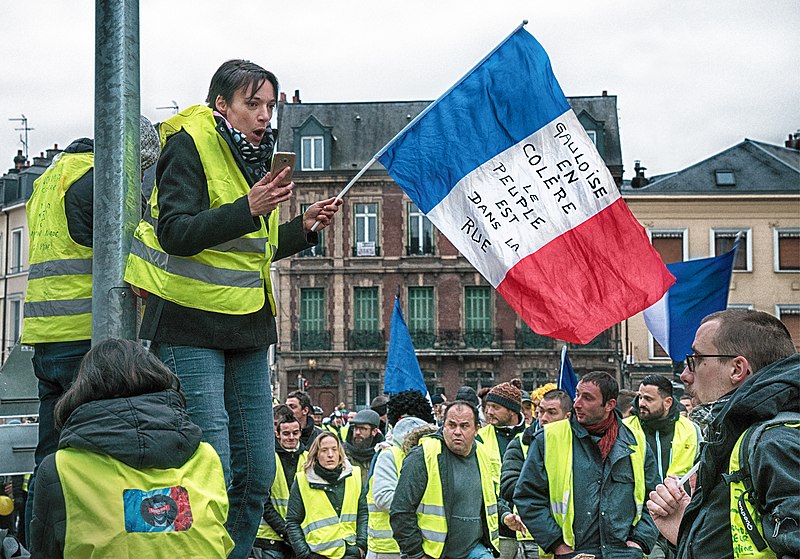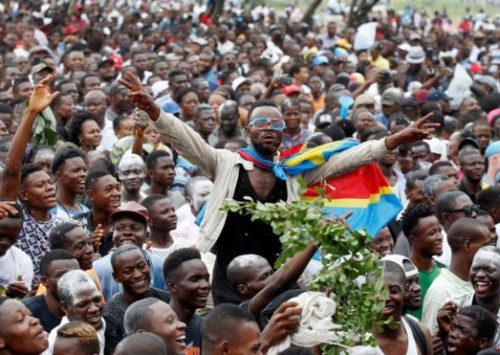French unrest
France needs to revive its smaller towns and rural areas to address the root cause of the Yellow Vests movement.
After a few weeks of sustained decline in the numbers of protestors gathering for the weekly stand off of Gilets Jaunes (Yellow Vests) in key cities, notably Paris, the French government had perhaps begun to breathe easy and the general feel, in the government as well as the media was that the movement was fizzling out and dying a natural death, after holding the attention of not just the entire country, but making an impact in others of the world as well.
However, the surge in numbers as well as violence of March 16 was enough to shake the government’s complacency off. President Macron had to rush back to work from his ski holiday as Champs Elyseés, the avenue barely 100 m from his official residence, bore the brunt of the attack, with smashed shop windows and fires, including the renowned Fouquet’s, a restaurant that has been the favourite haunt of the French political and art world for decades.
The Prime Minister subsequently sacked the Paris police chief for allowing the violence to get out of hand and not dealing with the violent protestors firmly enough. He also announced some more measures, including a conditional ban on protests on the Champs Elyseés.
The harsh measures may go some way in treating the symptoms of the problem that France faces today. However, it infuriated the protestors and sympathisers of the Yellow Vests as these measures were seen as a clear curtailment of their democratic right to demonstrate and protest. Also, the ban’s effectiveness over the longer run is unlikely to work unless the government declares a curfew in select places as well as stops train services on weekends to Paris and other large cities where the demonstrations take place.
Even if the government succeeds in suffocating the high-visibility protests, the issue is hardly likely to disappear. A recent poll suggested that despite the violence, 61 pc of the French sympathized with the cause of the Yellow Vests. And therein lies the crux. Despite its national slogan of Liberty, Equality and Fraternity, France has seen, over the last three decades, an accentuating gap between the rich and the poor and the development and economic growth has been extremely lopsided, with large chunks of territory that were previously rather well-to-do industrial centres becoming economic deserts as companies factories moved offshore or simply closed.
Some cities, notably Lille, previously a textile hub, have indeed managed to recover to a certain extent, by focusing on new technology and research, but even that’s not enough, especially to replace the blue-collar, semi-skilled workforce, without preparing them for new job roles. And many of the older workers have already retired or are close to that stage. For the youth in these areas, there just aren’t enough jobs as high levels of automation in most industries mean far fewer jobs for the same output. Even the public services have been cutting their manpower, in order cut the budget deficit, creating black holes of unemployment, with little hope of the future being better.
But the Yellow Vests aren’t only about unemployment. There are many who work in various sectors but find that the state has abandoned them and their communities, with severe under-investment in public services and infrastructure. Thus, most of them are obliged to drive to work and this is where the ‘eco-friendly’ taxes on fuel have been biting them the hardest. While for people living in the Greater Paris area or in any of the other metropolises of the country still have the option to use public transport and which has seen significant investments, the countryside remains bereft of these services, making the development unbalanced.
In addition, the benefits of the industrial and economic innovations have remained limited to a very small part of the French population, as has been the case practically everywhere else, increasing the inequality in the French society. To add insult to the injury, the decisions of President Emmanuel Macron to cut taxes on the rich, while simultaneously cutting the benefits to the poorer sections, including pensioners, have definitely touched a raw nerve and the Yellow Vests have come to symbolize a battle between the few haves and a large majority of have-nots in the country.
This is the main message that they wish to convey and while the French public seems to have received it fairly loud and clear, the government still seems to be ignoring it or unable to understand. That is the reason why nearly two of three French support the cause or at least sympathise with the protestors, despite the violence. This is also the reason why the protests are unlikely to die a quick or a natural death.
There are two sections amongst the protestors who have continued for 18 weeks, without a break. One is of course the disgruntled elements, even hoodlums, who like to join in during any public protests to damage public or private property and attack the police, and there are definitely more than a handful of them in each week’s protest. But there are others, housewives, hospital nurses, office-goers, middle class, young and old, who feel completely let down by Macron and his predecessors for their failure to coming to their succor and improving their lives. This is the section that the government needs to reach out and not just by doling out fiscal aid to them, but also by taking at least some steps to be seen to address the growing inequality. Whether that means higher taxes on the ultra-rich, banks or companies or the new economy. But some semblance of tampering down the million euro pay packets for the select few could indeed send the message home.














